You might have witnessed your dog flipping over the stairs at some point or other. Sometimes it is just a playful slip, but other times, it could be a serious fall.
It is especially true for hyperactive dogs who cannot remain in one place and are always looking for ways to vent out their energy.
While it’s rarely a good situation when a dog falls down the stairs, it can be worse if they get hurt. So much so that a dog falling down a flight of stairs could mean death.
Make sure to train your dog not to jump off the furniture because little dogs can fracture their bones by doing that.
When something happens to our furry friend, we get too hyper and forget what needs to be done. We have discussed at great length what needs to be done if your dog falls down the stairs.
What Should You Do If Your Dog Fell Down The Stairs?
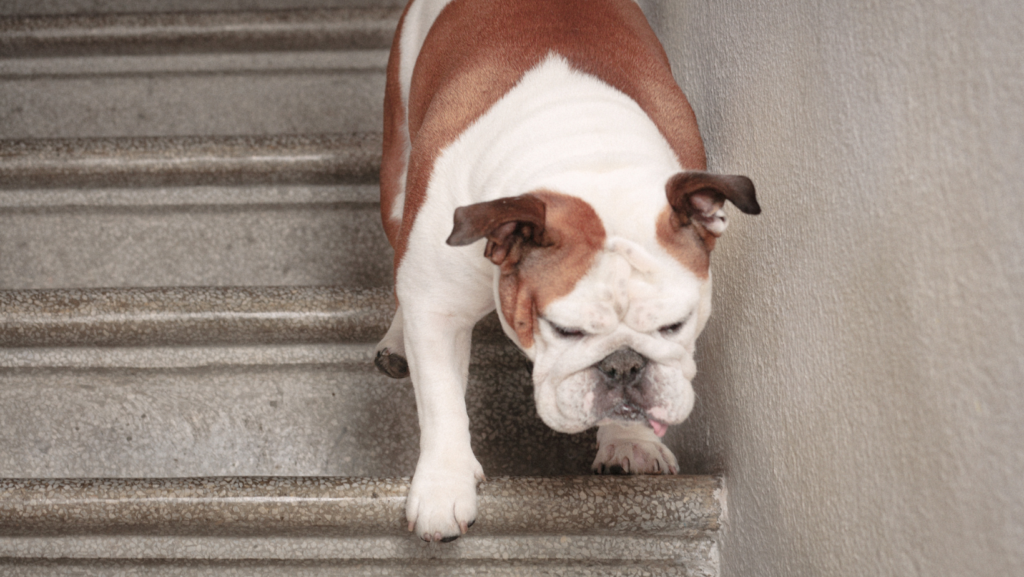
If your dog is limping or is in pain, give them some time to rest and see if the pain goes away. It would be best if you put something cold to it to ensure they do not feel much pain.
If your dog is still in pain after a few days, or if its symptoms worsen, it is best to take them to the vet for an examination.
If your dog seems to be having trouble walking, you can try giving them some joint supplements or anti-inflammatory medication.
You must always check for injuries, either if they have slipped off the stairs or fallen off some furniture.
If your dog does not show any serious signs of pain but there is discomfort, you can do a few things at home to help them feel better. First, give them some time to rest. You may also give them some CBD oil or another natural remedy to help with any pain or inflammation.
Once your dog is feeling better, make sure to monitor them for a few days closely and watch for any signs of serious injury.
3 Possible Reasons For Dogs Falling Off The Stairs
Perhaps your dog slipped down the stairs because they were running without paying enough attention. After all, they were enthusiastic about their approaching food, a stroll, or playtime.
It would be best if you never allowed your dog to run uncontrolled, whether within the house or outside since sometimes it can lead to a serious accident.
1. Staircase Design
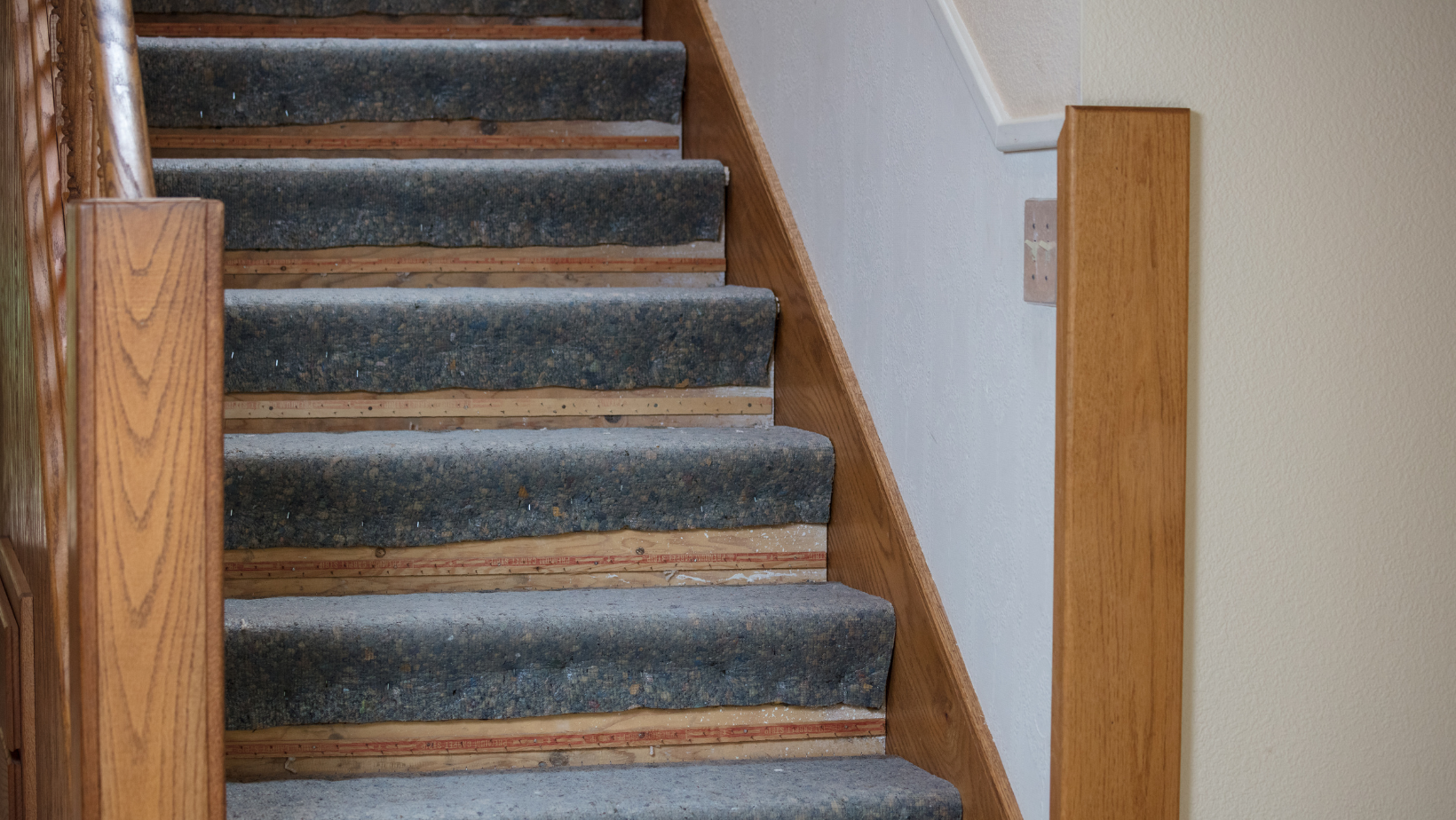
Sometimes, the problem could be with the stairs, as they could be damaged or slippery. It is best to seek repairs for your staircase cause an accident spot can inculcate fear in your dog’s heart, and they may get reluctant to take the stairs.
You can buy goods made especially for this need, such as carpeted stair steps. These kinds of goods can aid in preventing your dog from falling on the slick stairs, avoiding damage to your lovely laminated or wooden stairs.
Also available are area rugs and carpet runners. If your dog frequently wants to go up and down the stairs, it’s undoubtedly a good investment, even though some people may not find it attractive.
2. Inner Ear Issues
Your dog may find it hard to keep its balance, leading to falling from stairs. An ear infection is one of the major reasons why this would happen in the first place.
In such a case, you need to consult their vet for treatment immediately.
3. Brain Tumor
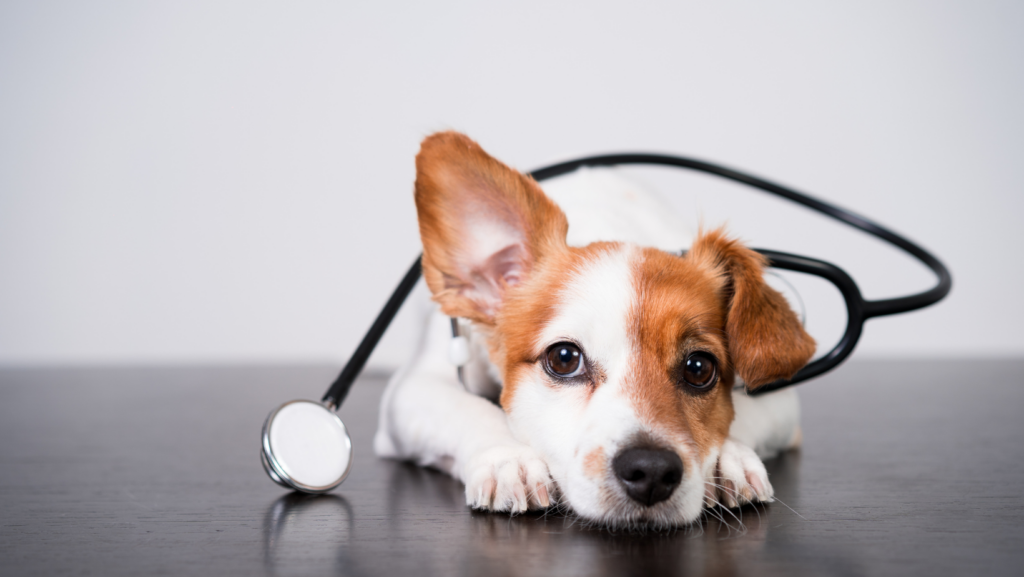
In senior dogs, brain tumors are not rare. However, they also occur in younger dogs, particularly Boston terriers and boxers. If your dog has been behaving abnormally or you notice a loss of appetite, you must get it checked for a brain tumor, as the next symptom to follow is vision loss or impairment.
4 Symptoms Of A Dog Who Fell Down The Stairs
Some dogs may be reluctant from the beginning to take stairs for fear of falling down. However, most dog parents insist that they practice doing the same to ward off the fear.
It is recommended to take things slow and allow your dog to learn to take things at their pace, or else they could get badly hurt.
If you suspect your dog has been hurt, you can look for certain symptoms to confirm if they were hurt.
1. Internal injuries
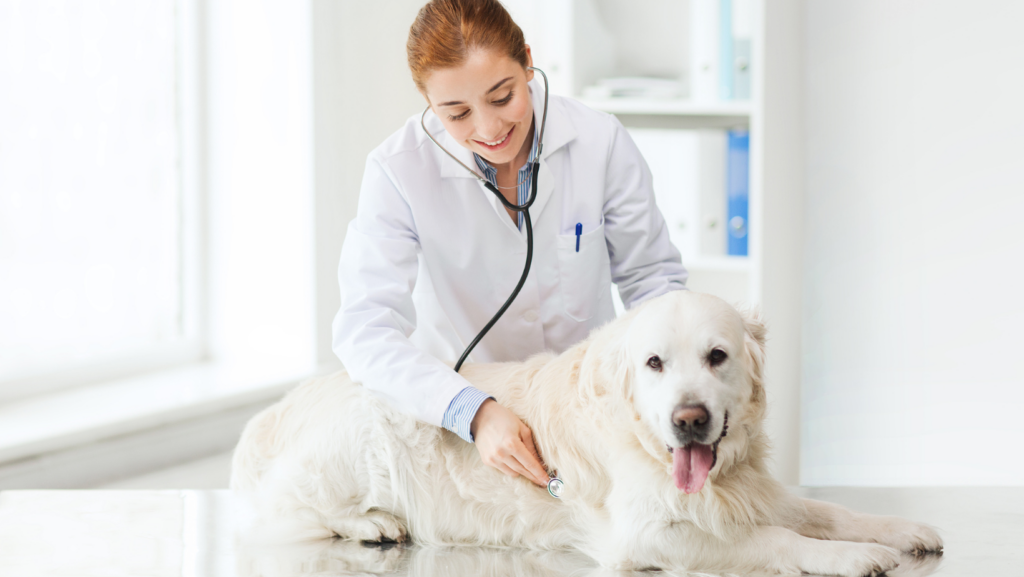
When a dog falls from a height, whether it’s on the stairs or after landing from a jump, a painful spill can result in internal injuries that can be difficult to detect.
When they fall, the tiny blood vessels just below the skin’s surface may break, leaving them with a bruise, and it may not be possible to locate the bruise from within their fur.
2. Stiffness and pain
If your dog cannot walk properly and appears as if they are walking with a limp, it may have hurt itself down the steps. This can lead to pain and even stiffness. Ensure that they get ample rest in case such an incident occurs.
They may be reluctant to move around because of the pain and want to lie down in one place.
3. Shock
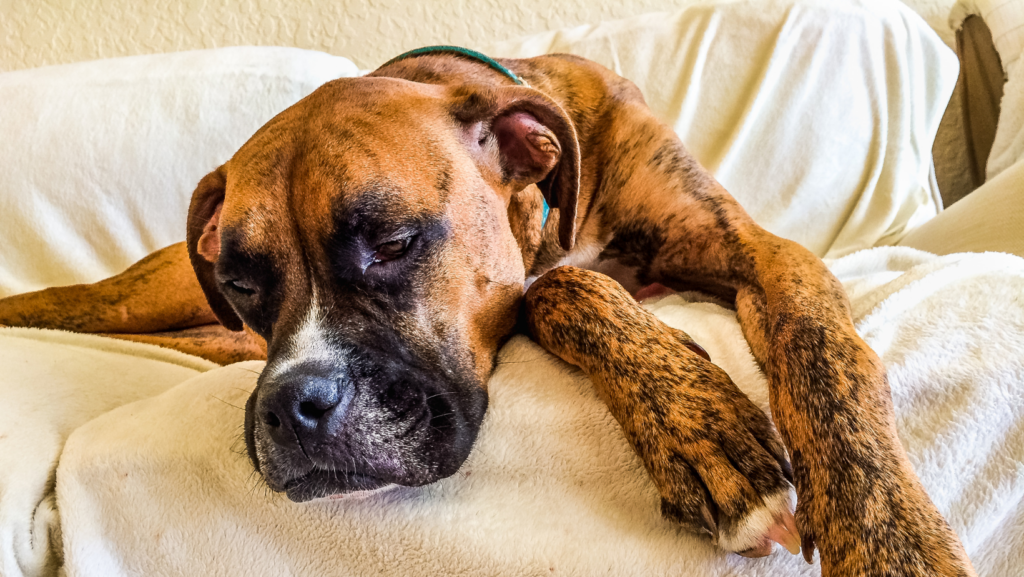
If your dog hasn’t been responding to anything around them, chances are they are in a state of shock. When in shock, they react differently than usual, and it is natural for them to lose track of the steps of the stairs.
A traumatic experience can lead to shock, followed by several other symptoms like rapid heart rate or panting.
4. Head and Brain Injuries
If your dog falls badly and injures its head, you can find bumps on its head. The most evident symptom of a head injury is bleeding. In most cases, skull fractures and brain damage are more difficult to detect. They may appear disoriented and shaky.
How Should You Handle a Broken Bone in Your Dog?
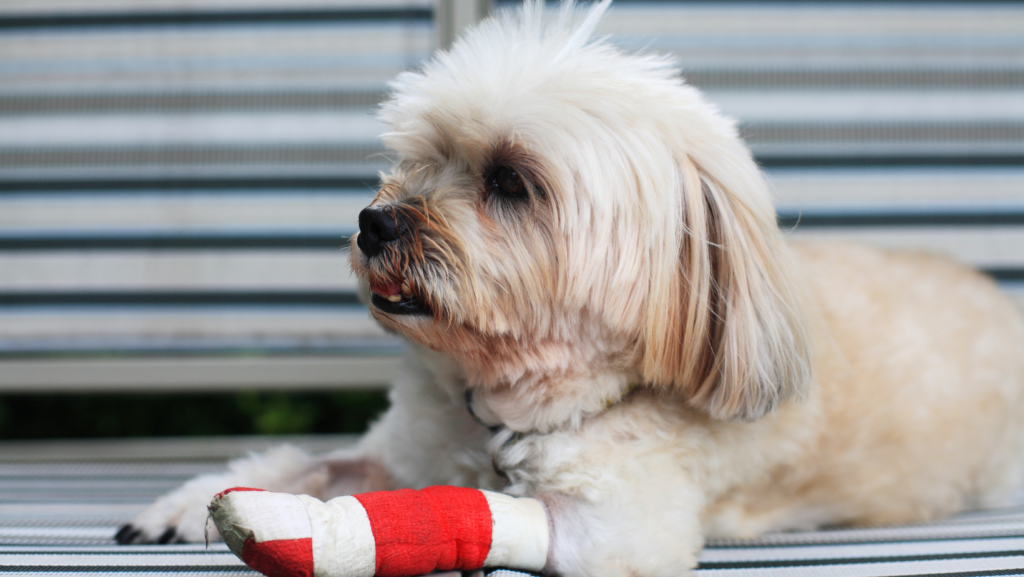
If your dog keeps getting into accidents, it may break several ribs or legs if it falls downstairs and cannot stand up.
Be cautious while handling it, as it could suffer from a back injury. In such a case, it should not be allowed to move too much or should not be mishandled.
After consultation with the vet, offer proper rest and allow it to stay in comfortable bedding till the bone gains enough strength.
They could exhibit symptoms right once or after a while, once the fractured bones have damaged the lungs or produced other illnesses.
Watch out for hard breathing and take your dog to the vet if you feel it’s related to a fall you weren’t present for because broken ribs can often hinder your dog from breathing properly.
Your dog may have broken their jaw if they have trouble chewing, drop its food, complain while it eats, or slobber and salivate excessively.
Be sure to have your dog’s broken bone checked by a veterinarian because this type of fracture is not always obvious.
Your dog might be unable to urinate or defecate if the bladder ruptures due to the fall and the resulting fractured bones.
If your dog wants to lie down or stand in a certain position, you shouldn’t move it too vigorously; doing so could cause the ribs to fracture and cause the lungs to explode.
Dealing With A Bleeding Dog
In particular, wounds with bleeding should be covered with clean cloth or towels to prevent infection, impeding your dog’s rehabilitation or becoming life-threatening.
Apply mild pressure to the wound while wrapping the towel securely enough to stop bleeding if it is bleeding heavily.
Do not remove the cloth if it becomes stained with blood; instead, cover it you can also with another covering.
Although bleeding should stop in 5–10 minutes, coagulopathy-affected dogs may experience a lengthier delay.
Bloodshot eyes, blood in the nose, or blood in the mouth could be a sign of a head injury.
Because dogs often lick their nose blood and swallow it in their mouth, do not wait to observe how profusely they bleed. Just take them right away to the veterinarian.
Preventing Your Dog From Falling From The Stairs
Clinical diseases can be treated, but accidents cannot be treated, so the best thing is to prevent accidents and save your dog from injury and the consequent pain.
Dog-Proofing

Whether or not your dog has fallen down the steps before, most standard staircases nowadays are not made for dogs and may be hazardous to them.
You should dog-proof your home before adopting a puppy, whether installing a secured trash can to prevent your dog from digging through the garbage or making your stairs as safe as possible for them to climb.
Dog-proofing your home can provide additional security for your furry friend.
Repairs
If your dog has been a victim of an old or damaged staircase, it is time to fix it. Renovating the stairs may seem costly, but getting it done can ensure your dog’s safety.
Old staircases are prone to breaking or falling apart, especially if they are outside and exposed to the elements.
Staircase repairs are important not only from the aesthetic point of view but also from your dog’s safety point of view.
Ramp
Those who can afford a ramp instead of a staircase must consider that option because even a few steps of stairs might be difficult for older dogs with small legs.
It will solve dual purposes as the surfaces of the ramp are non-slippery.
Dog Sling
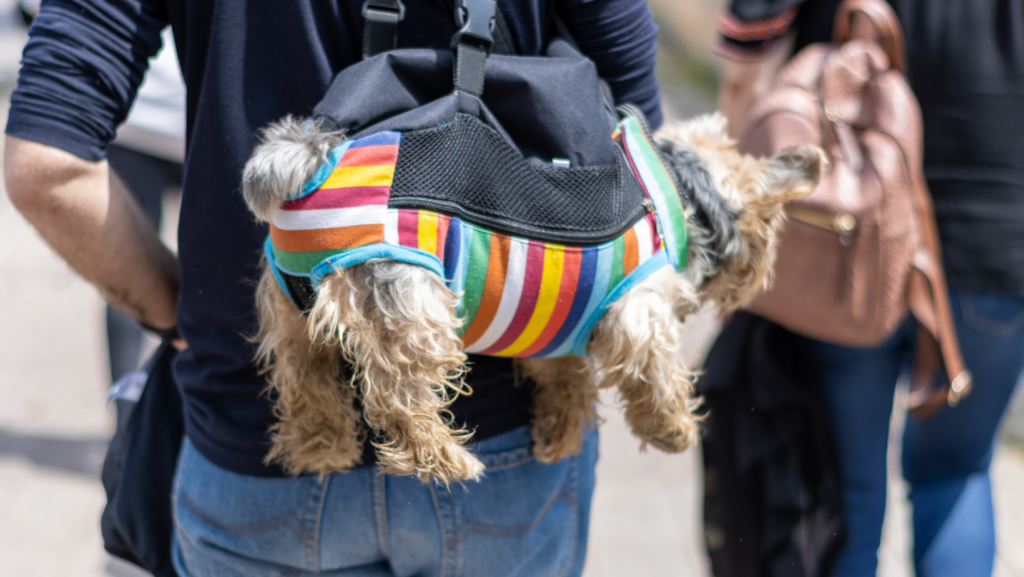
Large breed dogs are undoubtedly too heavy to carry up and down stairs in your arms.
Older dogs who may have joints issue or dogs with wounds cannot be carried in arms for fear of being mishandled.
Investing in a dog sling can assist you in resolving this issue because you can lift your dog’s back, which is typically where they put the most weight when ascending stairs.
Bonus Read: 5 Of The Best Dog Grooming Hammocks For Your Dog
Arms
The best option will be to carry your dog in your arms. Carrying your dog up and down the stairs can also be a great source of physical exercise for you!
It can also be a great of bonding with your pet.
Training
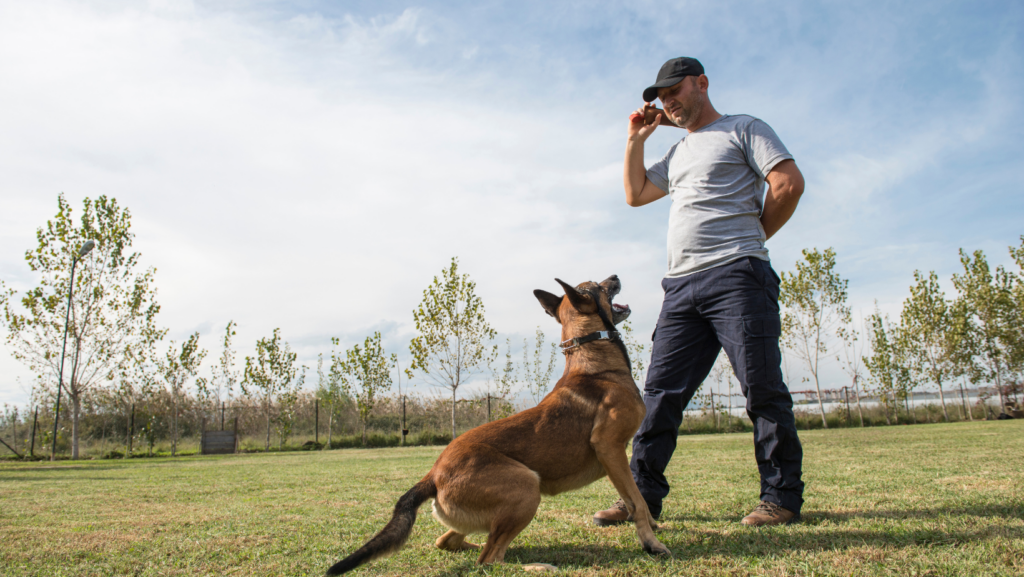
You can train your dog correctly to ensure they know exactly how to take stairs without hurting themselves.
You need to start early as this process requires you to be patient.
Also, do not forget to make this exercise fun! You can use this training time to bond better with your furry friend.
You can use the treats of their choice to train them properly.
Place treats at the top of the stairs and asks your pet to fetch them. Then use the same treat to entice them back down. Continue doing this step again until your dog can climb stairs without trouble.
Conclusion
Whenever your dog is in a troublesome situation, try not to panic, as it can make the situation worse by scaring them!
Start by picking them up calmly and ensure that they are comfortable before checking for any signs of injury. In case of any injury or pain, seek immediate medical assistance. If they don’t seem injured, gently massage them and see if they respond positively. If they do, then they’re probably just fine.
If the fall does not seem to have caused serious injury, you can try some simple at-home remedies.
Meet Madison Phillips, your compassionate guide to pet well-being. With experience from VCA Animal Hospitals and Laxton Vet Clinics Bellaire Inc. Madison honed her skills and embraced the balance of medical expertise and compassion, through her articles, she simplifies pet care, whether you’re a newbie or an experienced pet parent.

